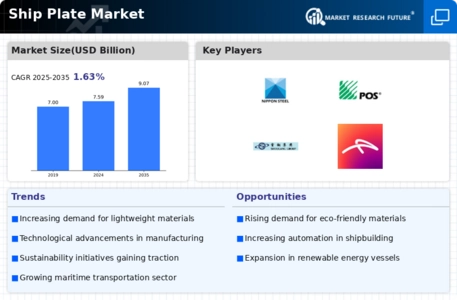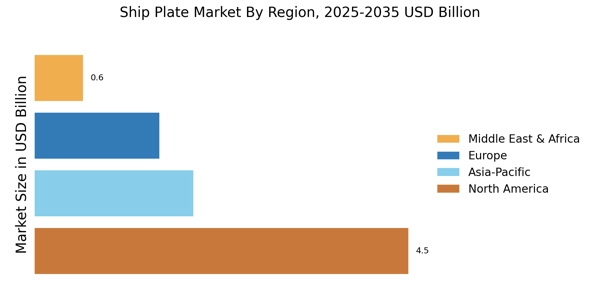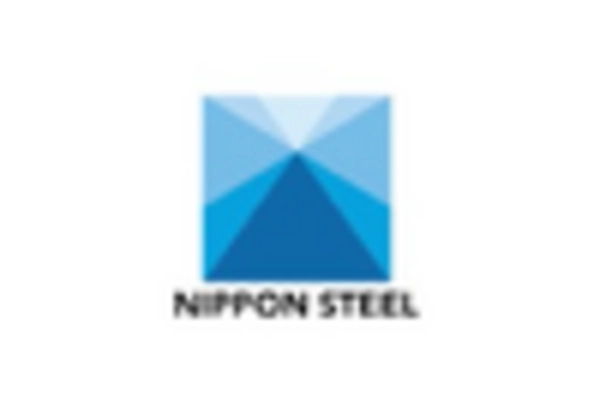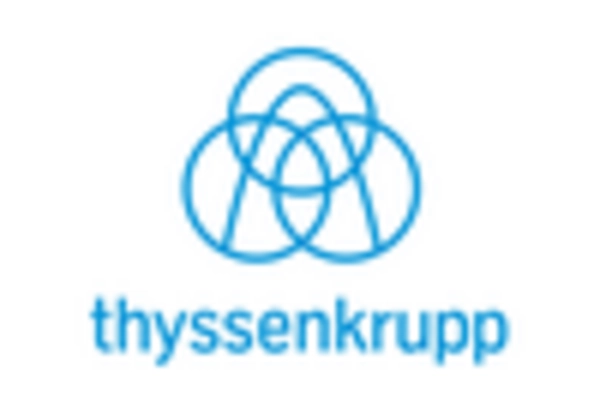Growth of Renewable Energy Sector
The Ship Plate Market is witnessing a positive impact from the growth of the renewable energy sector, particularly in offshore wind and marine energy projects. As countries invest in sustainable energy solutions, there is an increasing need for specialized vessels designed to support these initiatives. This trend is leading to a higher demand for ship plates that can withstand the unique challenges posed by marine environments. The offshore wind industry alone is projected to require a significant number of new vessels, which in turn drives the demand for high-quality ship plates. Consequently, the expansion of the renewable energy sector is emerging as a crucial driver for the Ship Plate Market.
Technological Innovations in Shipbuilding
Technological innovations are reshaping the Ship Plate Market, as advancements in manufacturing processes and materials science lead to the development of superior ship plates. Innovations such as automated welding techniques and the use of high-strength steel alloys are enhancing the efficiency and quality of shipbuilding. These technologies not only reduce production costs but also improve the performance and longevity of vessels. The integration of digital tools in design and manufacturing processes is also streamlining operations, allowing for more precise and efficient production of ship plates. As these technologies continue to evolve, they are likely to drive growth in the Ship Plate Market, attracting investments and fostering competition among manufacturers.
Regulatory Compliance and Safety Standards
The Ship Plate Market is significantly influenced by stringent regulatory compliance and safety standards imposed by maritime authorities. These regulations necessitate the use of high-quality materials in shipbuilding, including ship plates that meet specific safety and durability criteria. As countries implement more rigorous safety measures, shipbuilders are compelled to invest in superior materials to ensure compliance. This trend is reflected in the rising demand for certified ship plates, which are designed to withstand harsh marine environments. The market for ship plates is expected to grow as manufacturers adapt to these evolving regulations, thereby enhancing the overall safety and reliability of maritime operations.
Increasing Demand for Marine Transportation
The Ship Plate Market is experiencing a notable surge in demand for marine transportation. This trend is largely driven by the expansion of international trade and the need for efficient logistics solutions. As economies grow, the requirement for bulk transportation of goods via ships increases, leading to a higher demand for shipbuilding. According to recent data, the shipbuilding sector is projected to grow at a compound annual growth rate of approximately 3.5% over the next five years. This growth directly influences the ship plate market, as shipbuilders require high-quality plates to construct durable vessels. Consequently, the increasing demand for marine transportation is a pivotal driver for the Ship Plate Market.
Rising Investment in Maritime Infrastructure
The Ship Plate Market is benefiting from rising investments in maritime infrastructure across various regions. Governments and private entities are increasingly allocating funds to enhance port facilities, shipyards, and related infrastructure. This investment is essential for accommodating larger vessels and improving overall operational efficiency. As new shipbuilding projects are initiated, the demand for ship plates is expected to rise correspondingly. Recent reports indicate that investments in maritime infrastructure are projected to grow at a steady rate, further stimulating the Ship Plate Market. This trend underscores the interconnectedness of infrastructure development and the demand for high-quality ship plates in the shipbuilding process.


















Leave a Comment